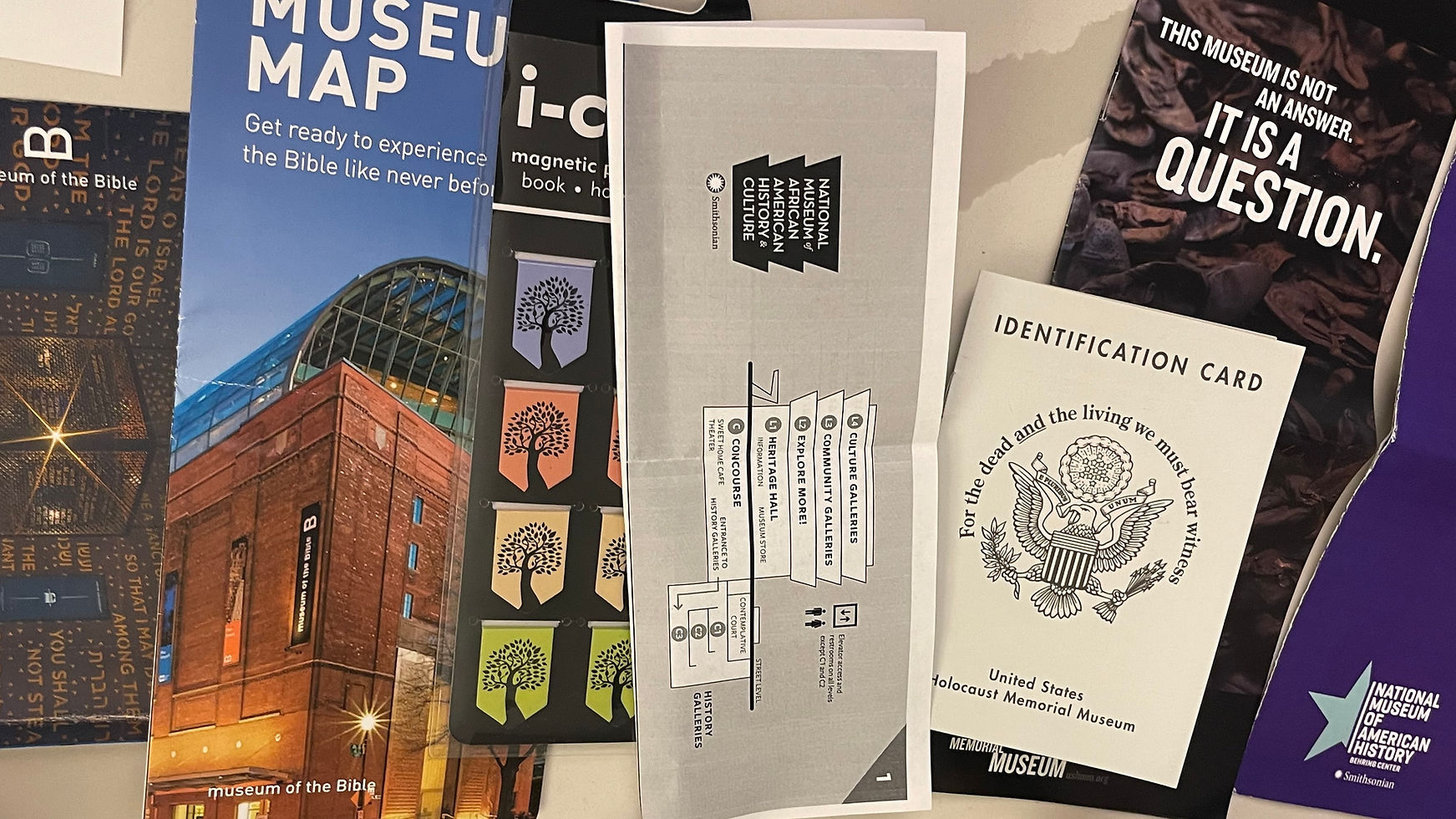
Through Three Doors: A Day in D.C
- Aug 14
- 2 min read
Updated: Aug 14
08/12/2025
Today as I walk through three very different kinds of rooms, each holding its own version of truth. Some felt safe, some shook the ground under me, and some asked me to think about belief in ways I don’t always let myself linger on.
The Museum of American History – A Panorama of Us
The first stop felt like opening a history book that decided to stand up and talk back. Every corner told a part of the American story — inventions, wars, speeches, and symbols. There’s a comfort in the way it’s arranged: neat, chronological, almost reassuring. But I couldn’t help but notice the airbrushing. Moments of conflict and injustice softened into quick paragraphs, leaving out the jagged edges. It’s a reminder that the “we” in We the People has always been complicated — and who gets counted in that “we” changes over time.
The Holocaust Museum – A Room That Holds Silence
Walking into the Holocaust Museum is like stepping into a silence that talks. The weight in the air isn’t just from the stories — it’s from the realization that these were real people, with lives interrupted in ways too horrific to soften. Here, history isn’t behind glass; it’s in the walls, in the grainy photographs, in the names. You can’t help but measure the distance between human ideology and human empathy.
The Museum of the Bible – Belief as a Lens
The last stop of the day shifted the focus entirely. Here, the conversation wasn’t about a nation or a war, but about a text that’s shaped civilizations. Whether approached as sacred scripture or cultural artifact, the Bible’s presence in history is undeniable. I found myself thinking about the push and pull between personal belief and the influence of powerful ideas — how some use faith to heal and others to control.
Threads That Tie Them Together
By the end of the day, I realized these weren’t just three separate visits. They were a progression — from a broad national identity, to a confrontation with humanity’s capacity for cruelty, to an exploration of the beliefs that can guide or divide us. And in between the exhibits, I felt something else: the awareness of being seen and unseen, understood and misunderstood, all at once. That’s the unspoken part of history — it’s not just about what’s preserved in museums, but how we carry it in the present moment.







Comments